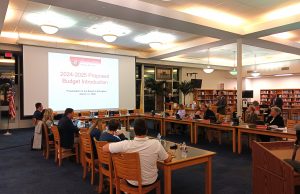Gayle Pohl, APR, brings a rich tapestry of over three decades in public relations to her role as an Associate Professor at the University of Northern Iowa. Her expertise spans nonprofit organizations, special events, healthcare, entertainment, and educational PR. Beyond her professional practice, Pohl dedicates herself to educating future PR experts, both at the graduate and undergraduate levels, and is an active member of the Public Relations Society of America. She also guides the next generation of PR professionals as a faculty advisor for the Public Relations Student Society of America and a student-operated agency for over a quarter-century. This profound blend of hands-on experience and academic insight provides a unique lens through which we examine the significant transformation within the field of public relations over recent years. Catalyzed by the rise of digital platforms and social media, this shift has not only broadened the array of tools available to PR specialists but has also revolutionized the manner in which organizations engage with their audiences. In this discussion, we delve into the significant influence of digital media on public relations, exploring the hurdles and prospects it introduces and proposing strategies for crafting effective PR campaigns in today’s digital landscape.
The Digital Transformation of Public Relations
Historically, public relations relied heavily on traditional media outlets such as newspapers, television, and radio to disseminate information, manage public perception, and build brand reputation. Gayle Pohl of Iowa explains that the process was largely one-way, with limited feedback from the public. The digital revolution, spearheaded by the internet and later by social media platforms, has democratized content creation and distribution. It has shifted the power dynamics between organizations, the media, and the public, leading to a more interactive, immediate, and transparent communication landscape.
Social Media: A New Arena for Public Engagement
Social media platforms like Twitter, Facebook, Instagram, and LinkedIn have become indispensable tools for PR professionals. Gayle Pohl emphasizes that these platforms allow for direct engagement with the audience, real-time feedback, and the ability to shape narratives in a more personal and conversational manner. The rise of influencers and content creators on these platforms has also introduced new avenues for brand collaborations and endorsements, further blurring the lines between traditional advertising and public relations.
The Challenges of Digital PR
The digital era has not come without its challenges for PR professionals. The speed at which information spreads online can amplify the impact of a crisis, requiring rapid response strategies and constant vigilance. Additionally, the sheer volume of content and the fragmented nature of digital media landscapes make it more difficult to capture and retain the public’s attention. The rise of misinformation and the erosion of public trust in media and institutions also pose significant hurdles for maintaining credibility and effectively managing public perception.
Strategies for Successful PR Campaigns in the Digital Era
To navigate the complexities of digital PR successfully, organizations and PR professionals must adapt and adopt new strategies. Gayle Pohl shares these key approaches to consider:
- Embrace Multi-Channel Communication
Successful PR campaigns no longer rely on a single medium. Instead, they integrate traditional media with digital platforms to create a cohesive and omnipresent brand narrative. This approach ensures that messages reach a broader audience and accommodate varying consumer media consumption habits. - Foster Authentic Engagement
In the digital era, authenticity resonates. Audiences seek genuine connections and are quick to discern and dismiss insincere communications. PR campaigns that prioritize transparency, honesty, and authenticity in their messaging tend to foster stronger relationships with their audiences. - Leverage Data and Analytics
Digital platforms provide access to vast amounts of data that can inform and refine PR strategies. By analyzing engagement metrics, audience demographics, and sentiment analysis, PR professionals can tailor their campaigns to better meet their audience’s preferences and improve effectiveness. - Be Agile and Responsive
The fast-paced nature of digital media requires PR campaigns to be flexible and responsive. Organizations must be prepared to quickly address feedback, adapt to changing public sentiment, and manage crises in real-time. This agility can mitigate potential damages and capitalize on emerging opportunities. - Prioritize Quality Content
In a crowded digital landscape, quality content stands out. PR campaigns should focus on creating valuable, relevant, and engaging content that aligns with the brand’s identity and values. This approach not only attracts attention but also builds credibility and authority in the industry. - Collaborate with Influencers
Influencers and content creators can amplify a brand’s message and reach niche audiences that traditional PR might miss. Collaborating with influencers who align with the brand’s values and audience can enhance the authenticity and impact of PR campaigns.
The evolution of public relations in the digital era has transformed the field into a dynamic and interactive discipline. While the shift presents new challenges, it also offers unprecedented opportunities to engage with audiences in meaningful ways. Gayle Pohl of Iowa emphasizes that by leveraging the power of digital platforms, prioritizing authenticity, and embracing data-driven strategies, PR professionals can navigate the complexities of the digital landscape and execute successful campaigns that resonate with today’s audience. In this ever-evolving field, adaptability, creativity, and strategic insight are key to shaping public perception and achieving lasting impact.






